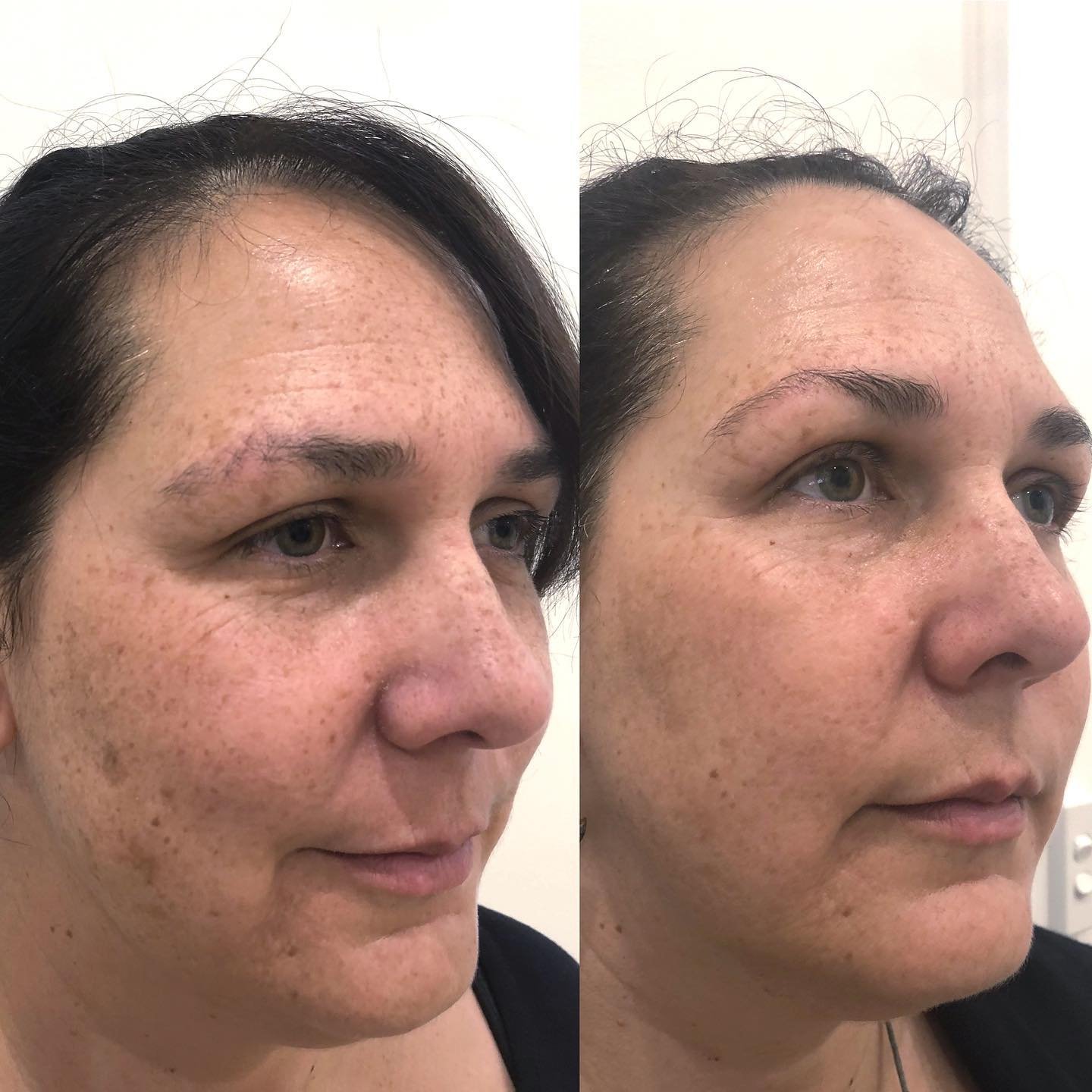PIGMENTATION
Looking for a more even skin tone and complexion? You are not alone! Troubles with irregular skin pigmentation is one of the most common requests for help that we receive.
Fortunately we have an arsenal of treatments.
Step one is always diagnosis. Pigmentation is a clinical sign, not a diagnosis. We need to establish why there is increased pigmentation, what level of the skin is it sitting in (deep, mid, superficial or all of the above!). This requires us taking a full history including medications, sun exposure, previous treatments, and performing a skin examination with a UV filtered light and skin microscope (dermatoscope).
Common pigmentation disorders we see and treat:
Melasma
Solar Lentigos (Sun or Age spots)
Freckles
Post inflammatory hyperpigmentation
Dyschromia (red/brown mottling of the skin from significant sun exposure)
Once we know what we are dealing with, then we devise a plan, usually using a combination of skin care, chemical peels and laser therapy. The best results are achieved by combination therapy of good skin care products, lifestyle modification and clinical treatments. We also encourage patients to use sun protection daily from broad brimmed hats when outside to sunblocks every day no matter the time of year to prevent further damage and protect skin after treatments,
Skin care:
Topical Vitamin A,B,C serums
Tyrosinase inhibitors (Retinoids, Vitamin C, Kojic Acid, Tranexamic acid)
Sun protection/zinc/chemical SPF
Laser treatments:
CO2 resurfacing
Excel V + vascular laser spot and total face treatments
Skin treatments:
Melasma Peels (Mela Peel)
Skin Pen
+ What is Melasma?
This is pigment deeper in the dermis and is more common in women. It is linked to hormonal imbalances and can be made worse from sun exposure, pregnancy, some medications and genetics. Melasma is a condition that needs to be managed consistently over time. With good education and combination therapies, one can achieve excellent results.
+ Why do I need a skin check?
All pigmented skin lesions need to be examined by one of our skin cancer doctors to ensure they are not melanomas. Every year there are reports of melanoma’s treated as sunspots in laser clinics where there is no doctor present to examine the patient first. At Central Wagga medical and Skin, your safety is our number one concern.
+ What is all the hype with Vitamin A, B and C?
Vitamin A enables surface hypermination cells to be sloughed and reverses the damaging effect of UV light on skin. Retinoids are responsible for tyrosinase inhibition and helps reduce clumping of melanin. Vitamin B helps prevent transfer of pigment from the cells to the epidermis. Vitamin C reduces formation of melanin and inhibits the enzyme tyrosinase which causes melanin production.



